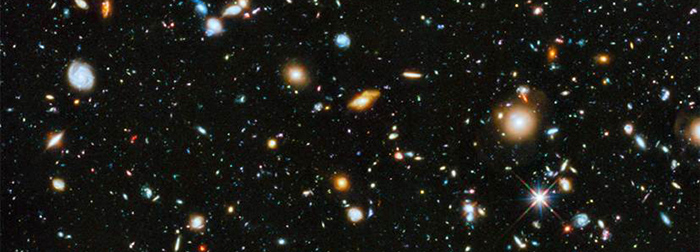Hubble Telescope Finds 'Teenage' Galaxies With Ultraviolet Camera

Hubble Ultra Deep Field, 2014 | NASA | HubbleSite
(Inside Science) -- Results are just coming in from an ultraviolet camera installed on the Hubble Space Telescope in 2012. Seeing ultraviolet light helps astronomers construct a timeline for the evolution of the universe.
Before the camera was installed, the Hubble could only see some of the longer, redder wavelengths of light in a region of the universe known as the Hubble Ultra Deep Field. These provided a lot of information about very old, distant galaxies. Other telescopes were able to see very young galaxies, but the middle section lacked information.
Hubble needed a camera sensitive to ultraviolet light to see the brightest, youngest stars in the universe forming within "teenage" galaxies — galaxies somewhere between just coalescing and becoming fully formed.
Astronomers have an incomplete picture of galaxy formation without the information from the teenage galaxies.
"It’s sort of like having studied peoples by first studying infants, and then studying grownups after they’ve graduated college but missing everything in-between," said California Institute of Technology astronomer Harry Teplitz in a press conference at the American Astronomical Society meeting in Boston.
Just like in people, those formative years for galaxies are very important.
The light from the stars forming within the teenage galaxies shows astronomers how the stars develop their ultimate shape. Previously researchers thought that stars mainly formed in clumps near the center of a galaxy.
Teplitz and his team said they were surprised when they saw that clusters of young stars formed throughout the entire galaxy.
"Where those clumps are will tell us a lot about how galaxies form in the shape we see today," Teplitz said.
On Tuesday, Teplitz’s team released a composite image showing the full color photo of the Hubble Ultra Deep Field with ultraviolet and infrared light waves.
"This gives us one of the most comprehensive visions of galaxy evolution ever obtained," Teplitz’s said.
Cynthia McKelvey is a science writer based in Santa Cruz, California. She tweets @NotesofRanvier
